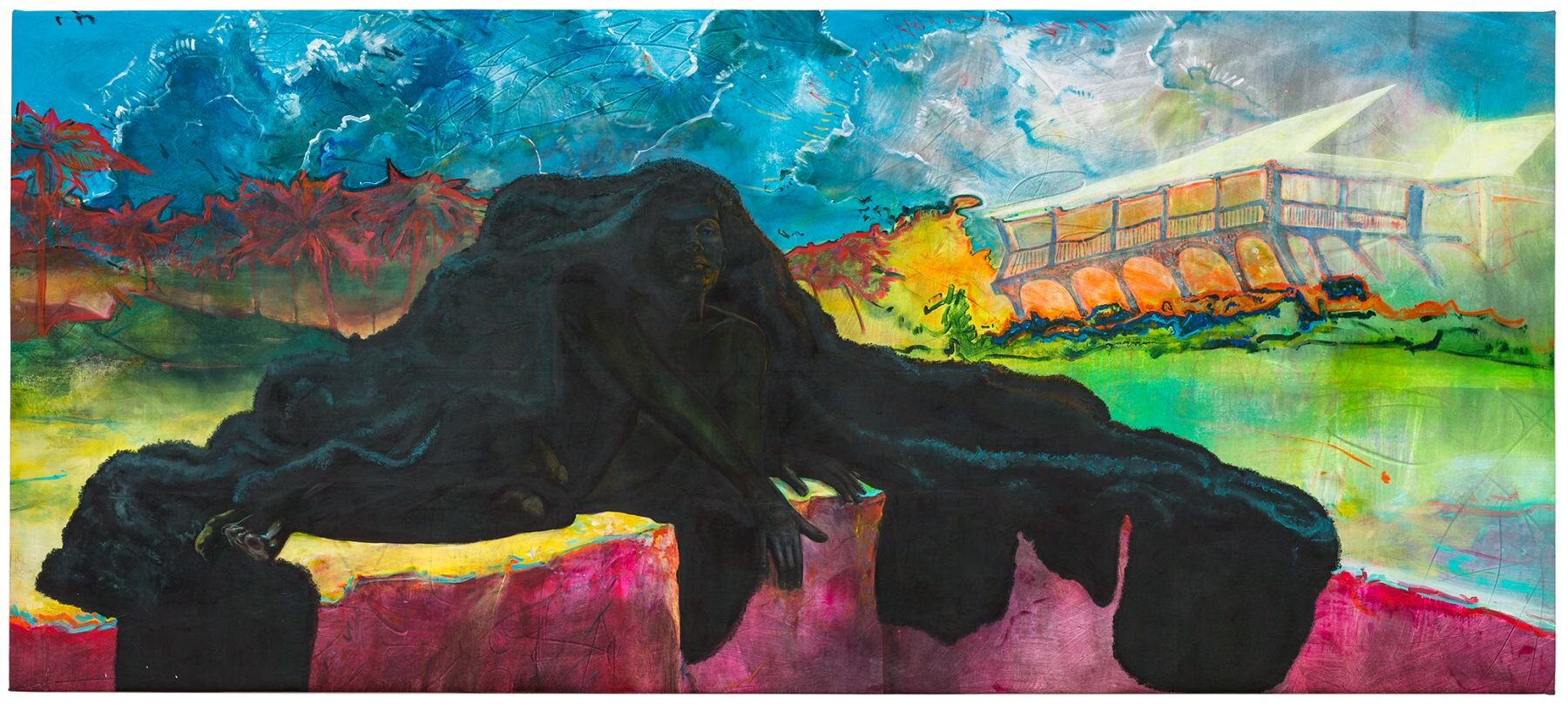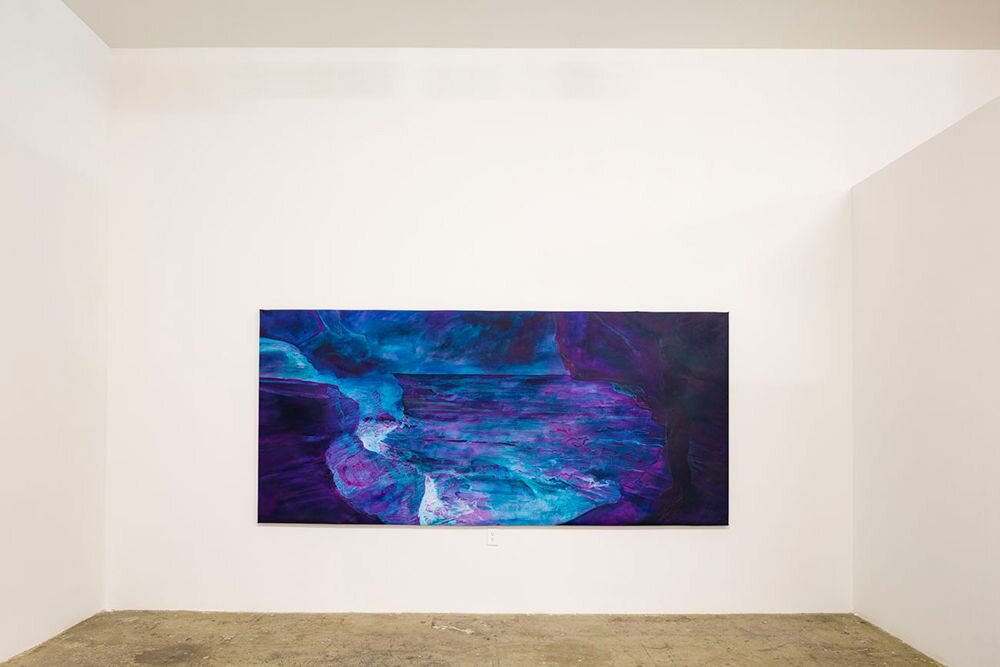Cy Gavin | At Heaven's Command
April 1 - May 15, 2016
Cy Gavin | At Heaven's Command
April 1 – May 15, 2016
Sargent’s Daughters is pleased to present Cy Gavin’s second solo exhibition with the gallery, entitled At Heaven’s Command. The exhibition will consist of new paintings and will present a video work by Gavin for the first time. The exhibition will be on view from Friday, April 1st through Sunday, May 15th, 2016, with a public reception attended by the artist on April 1st.
Gavin takes the title of the exhibition from the first stanza of “Rule, Britannia!”, a well-known British patriotic song which rose to fame in the mid-eighteenth century and is still performed today.
When Britain first, at Heaven's command
Arose from out the azure main;
This was the charter of the land,
And guardian angels sang this strain:
Rule, Britannia! rule the waves:
Britons never will be slaves.
Bermuda, the homeland of Gavin’s father, has been a lens through which Gavin considers the African Diaspora; one that has influenced this body of new work. Bermuda served as a way-station for ships bringing African slaves to the West Indies, Mexico and the American Colonies. Thinking of Bermuda as a locus of transition and transaction, Gavin looks to figures of resistance in Bermuda’s fraught history and renders even land to appear aggressive and anti-colonial. While visiting Bermuda, Gavin lived outdoors closely observing and documenting vegetation, geological formations, wildlife and atmospheric conditions. In the painting Jeffrey’s Cave, Gavin slept in a limestone grotto that once sheltered a notable runaway slave named Jeffrey. The painting shows the actual rock formations as viewed from the aperture of this cave. This interest in site-specificity is also seen in the video performance, Now, O Now I Needs Must Part, which was filmed on South Shore Bermuda, looking out over the Atlantic Ocean towards Africa. In the film, Gavin sings traditional Elizabethan minstrel songs while costumed in Elizabethan attire and white-face, co-opting this form in an earnest effort to re-contextualize these songs and pay homage to the lives lost and altered by the transatlantic slave trade.
In keeping with previous bodies of work, Gavin uses unorthodox materials in his paintings, seeking to have the works themselves bear testimony to the experience of place. In Sally Basset, Laughing, Gavin addresses the account of Bermudian slave, Sally Basset, who was publicly burned at the stake for allegedly poisoning her slaveowners. In this painting, Gavin incorporates the seeds of the Bermudiana iris, which was said to have sprouted from Sally Basset’s ashes as a sign of her innocence. The paintings broach ideas of self-determination and camouflage, as well as individual vs. collective identities, notions which have remained consistent subjects in Gavin’s work. The paintings approach ideas of identity and disarticulation from one's culture that relate to the artist's own relationship to Bermuda, Africa and the history of slavery that remains institutionally obfuscated on the island.














